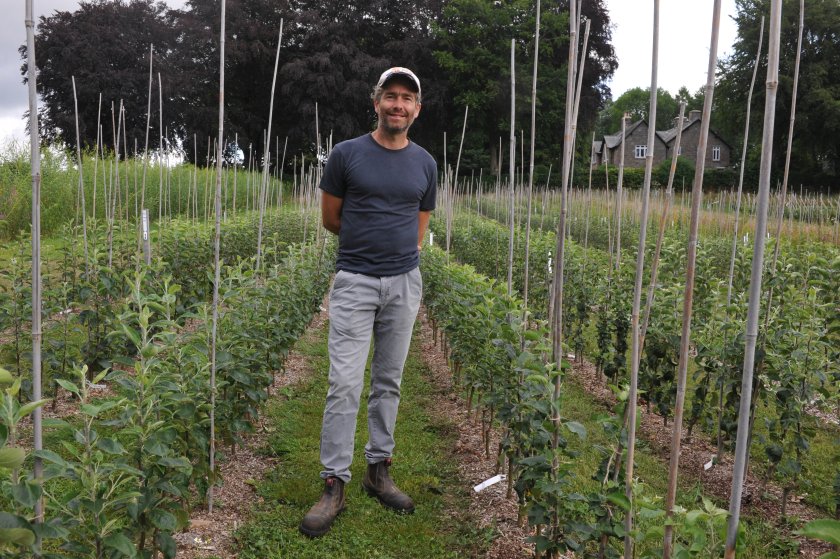
A Welsh fruit tree grower is urging others to use organic principles and an environmentally sensitive approach to pest control.
Tom Adams grows fruit trees on a 2.6 hectare site in Weston Rhyn, near Oswestry, which he purchased in 2018.
One of his core goals when he designed his current site was to create a closed-loop system by producing his own compost and wood chips to be self-sufficient in soil improvements.
"We grow 3,000 – 4,500 trees a year and they all need tomgrass," he said. It makes Ramial wood chips (RCW) from trees with a trunk no larger than 7cm in diameter.
"It's nutrient-rich and can be spread fresh without it taking nutrients from the soil because it has a higher nitrogen to carbon ratio than wood with a larger diameter,'' Tom explained.
"It doesn't take as much nitrogen out of the soil as wood chips from trees that have a large diameter.''
Some of that tomgrass comes from willow - Tom has three willow trees and grows five different varieties; Willow contains salicylic acid, and there is evidence to show that it helps control scabies in apple trees.
Trees are pruned when they are two years old, in November when they are not in leaf, and a two-year pruning cycle follows.
To chip the wood, Tom hires a wood chipping machine at a cost of around £200 a day. He said: "I think it's better to hire a good one who does a good job than to buy a cheap machine that doesn't'.
It is self-sufficient in its own pest control methods, growing wildflowers and cultivated flowers to create a diverse population of insects including bees, guinea red cows, sidering wings, butterflies and hoverfly.
"We're cutting less and less to allow more growth to attract those insects,'' Tom explained.
It implements a seven-year rotation for apple trees to avoid 'apple replanting disease' - if trees are planted on the same site year after year the size of the trees gradually decreases.
"Seven years is the key," Tom recommended. He also advised that it would be better to grow at least two different varieties of each fruit tree, to protect against failure.
To control blueflies, which can reverse spring growth, he uses a homemade spray that combines a distillation of seaweed, garlic oil and triad.
Its main goal, however, is to create the right soil and plant health conditions to combat those pests.
Green manure, Camry tea, cut flowers and vegetables are grown in its seven-year rotation but he said the land blocks could also be used in other ways, for example to preserve chickens or ducks or to grow grains such as rye or barley, and increase it for larger sites.
"We try to get bare soil for as short a time as possible,'' he said.
Green leaves are not allowed to reach flowering stage or many of their valuable nutrients would be lost.
Tom collaborates with other businesses to enable his seven-year rotation, including the Camry tea business.
His fruit trees are planted in rows running north-south, to allow for a good light start - if they ran east to west the intensity of light would be uneven, he noted.
Soft fruit plants are planted on the western edges of those rows to take advantage of the afternoon sun. "Fill in those gaps with something useful,'' he recommended, adding that "soft fruit can cope with shade where sunlight comes through the trees.''
On the eastern side, plants such as juniper and mint are grown to attract pollinators and also predators to control pests.
"There can be a lot of fungal problems in Wales due to the wet climate, so it's important to consider disease resistance when choosing varieties to grow," he said.
The rooting qualities of rootstock should also match local soil conditions – different root stocks are available for different soil types and situations.
Tom grows M106 and M116 as rootstones for apple trees, both with similar energy. These are planted in February.
All trees are covered when planted and a green manure path is created between rows.
"Everything we grow here has more than one use,'' Tom said. "[We] grow a variety of fruit trees including pears, apples, cherries, plums and black plums, varieties that are disease resistant and easy to grow."
